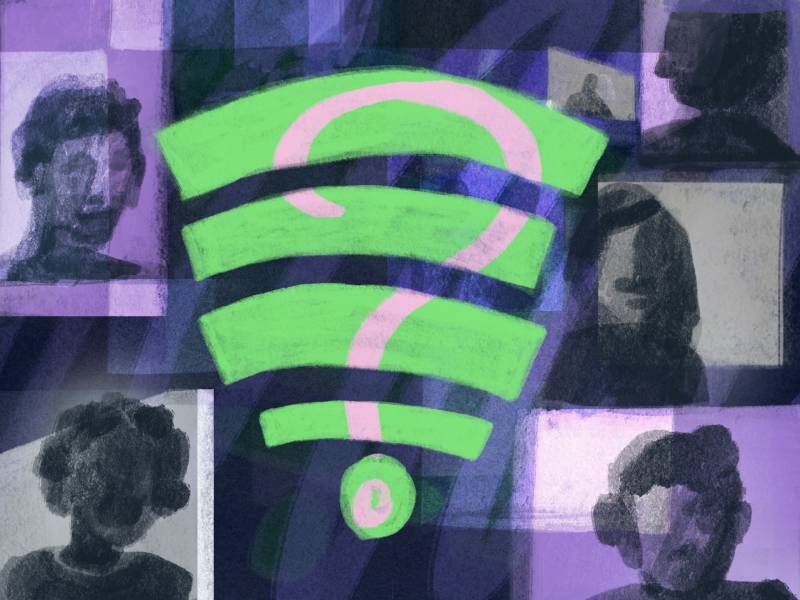According to a 2023 FCC survey, almost half of respondents said before the ACP, they had either no internet service or were relying entirely on mobile internet service. 77% of respondents said that losing their ACP benefit “would disrupt their service by making them change their plan or drop internet service entirely.”
Are you one of millions of people relying on ACP for their Wi-Fi? Read on more to learn about other affordable Wi-Fi options in the Bay Area that might be available to you — and the White House’s future plans are around this aspect of the digital divide.
Now ACP is gone, where else could I find affordable Wi-Fi?
Programs from internet providers
Some providers offer their own access programs you may be eligible for, based on income or if you receive benefits like CalFresh (previously known as food stamps) or Supplemental Security Income. These include:
If you were previously enrolled in ACP and did not hear from your internet service provider after ACP ended, reach out to your provider to see how they can help with your bill throughout 2024.
Lifeline
Lifeline is an FCC program that provides discounts for phone or internet service. While separate from ACP, households who qualify for Lifeline also qualify for ACP, and it’s technically possible to be enrolled in both programs (more on this below).
Lifeline provides up to $9.25 off the monthly bill for eligible lower-income households (up to $34.25 per month for those on Tribal lands). However, there are caveats: One household cannot have more than one Lifeline service, and it cannot get a discount on both wireline (home phone) or wireless (cellphone) services.
But there is also a California-only version of Lifeline. Here, the monthly cellphone service discount is up to $19, and the service connection discount is up to $39 — but again, there’s fine print. “Only one discount per household for each residential address is allowed (except for teletypewriter users and Deaf and Disabled Telecommunications Program participants),” the website reads. “Households cannot get the discount from multiple phone companies. Households not following the one discount per household rule will lose their discounts.”
California households qualify for either Lifeline program if they are enrolled in other benefits programs such as:
- Medicaid (Medi-Cal in California)
- SNAP (CalFresh in California)
- Section 8
- Tribal Temporary Assistance for Needy Families
Households can also qualify based on income before taxes. If a household is made up of one to two people, that collective income must be at or under $32,500. For a house of four, it must be at or under $45,900. See the full eligibility list for Lifeline.
If households are only interested in broadband (internet access), they can apply for Lifeline on the National Verifier application system. If you’d like help from an internet service provider when getting connected, you can check out this tool to see which companies are nearest to you. Households will have to recertify every year.
Other programs to investigate
Residents may also qualify for the Deaf and Disabled Telecommunication Program, which provides specialized technology and services.
For those who represent community-based organizations, they may be eligible for 50% off their connection services through the California Teleconnect Fund.
Map: Find a free or low-cost internet plan near you
California’s Public Utilities Commission has a tool for users to find free or low-cost options near them, sorted by zip code.
Hover over the highlighted areas to get more information broken down to mobile providers and internet providers near you.
(Visit the map to locate your neighborhood here.)
For example, in 94110 (where KQED’s office is located), Comcast’s Internet Essentials is a nearby low-cost option.
What will the White House do to provide Wi-Fi to those who need it?
According to Biden adviser Steven Benjamin, during the May 30 press conference, the White House encouraged — and received — “voluntary commitments from internet service providers across the private sector … to continue offering high-speed internet plans at $30 or less through 2024 for eligible households.” Those volunteer internet service providers include AT&T, Comcast, Verizon, and Spectrum, Benjamin said.
According to an AT&T spokesperson, the company is “working with customers that previously received the ACP benefit to help them adjust to life without it” by offering temporary benefits and other previously existing low-cost AT&T plans.
“We continue to urge the government to act on a more permanent and reliable funding solution for programs like ACP,” AT&T’s spokesperson told KQED by email.



